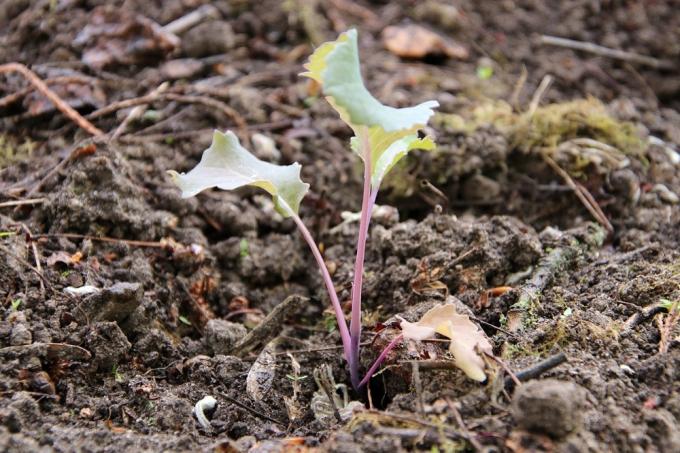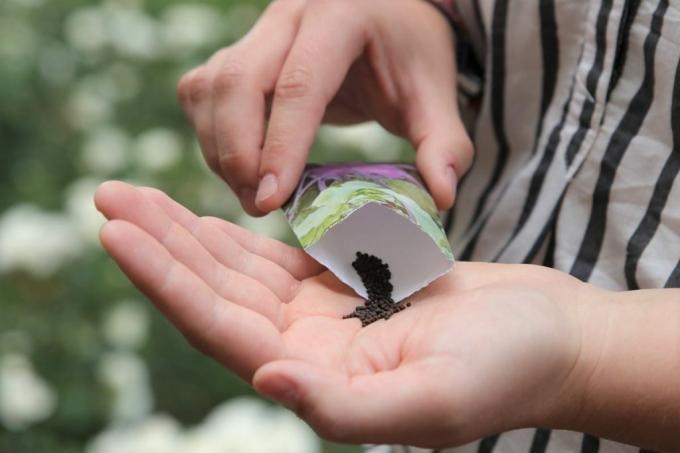
table of contents
- Prefer kohlrabi
- When to prefer kohlrabi
- Prepare kohlrabi step by step
- frequently asked Questions
It is always necessary to give preference to vegetables if the plants do not suit the climatic conditions. Growing kohlrabi is therefore not absolutely necessary, but it can make sense.
In a nutshell
- Juicy meat, protection from animals or intensive crop rotation are reasons for choosing
- Advance can begin between February and March
- cold temperatures damage the kohlrabi young plants
- after approx. six weeks these are ready for the field
Prefer kohlrabi
The cultivation of kohlrabi is also possible in our region without pre-aging. Still, there are good reasons if you want to prefer the kohlrabi.
- juicy meat
- Protection against pests
- intensive crop rotation
The shorter the kohlrabi ripens before harvest, the juicier the vegetable meat will be. If you want to harvest particularly tasty plants, you should prefer vegetables. At the same time, the young plants are susceptible to pests. Snails, mice, squirrels and Co. devour the delicious vegetables. However, if the plants are already larger, the voracious animals cannot destroy the entire harvest. At the same time, preference is recommended if your own garden is to be used intensively. The early harvest and the quick harvest then stimulate the nutrients in the soil.

When to prefer kohlrabi
The right time to prepare kohlrabi is February to March. Then gardeners can prefer the kohlrabi in the greenhouse or indoors. There it can become relatively large and then wander into the garden bed for a few more weeks.
Prepare kohlrabi step by step
There are a few tips to keep in mind when making kohlrabi. So here is a guide on how to enjoy kohlrabi at the right time.
Sow the kohlrabi
When you start sowing kohlrabi, you should put the substrate in pots, tubs or flower boxes. This is a cultivation soil. The pots should have a diameter of approx. 5 cm. Then the seeds of the kohlrabi are scattered into the substrate. Then put some soil on it and press it on. Last but not least, the earth is moistened.

Tip: Do not use a watering can to moisten the kohlrabi seeds. You can professionally moisten soil and seeds with a spray bottle.
In the next step, a cling film is placed over the pots. Put them in a sunny place. The earth must remain permanently moist. The spray bottle is suitable for this.
Prick the kohlrabi
The kohlrabi plants can be pricked out after four weeks. In addition to the typical cotyledons, the plants have at least two other leaves. Then it's time to prick the kohlrabi. To do this, separate the seedlings and plant them again one by one.
Note: Use pricking to sort out sick plants. Trimming the roots can also accelerate growth.

Transplant kohlrabi
After pricking, the plants should still develop a little in the familiar environment. After approx. six weeks at the end of April it is time for the kohlrabi to be transplanted into the garden bed. In the case of a sandy soil, an enrichment with compost takes place beforehand in order to create the optimal nutrient conditions for kohlrabi.
Tip: There should be a distance of between 25 and 30 centimeters between the rows and plants.
frequently asked Questions
For intensive crop rotation management, preference is given to kohlrabi. A longer growing phase is recommended. If the phases are too short, the risk of diseases in the soil increases.
Cold spells should be limited to short periods of time when preferring kohlrabi. Because young kohlrabi prefer warmth. When they freeze, they no longer form tubers. It is therefore advisable to keep a minimum temperature of 14 degrees. Ideally, the temperature when pulling out is 20-22 degrees.
Cultivation usually begins in February and March. After six weeks, the young plants are ready for life in freedom. If you start later in the year, four weeks will suffice.



